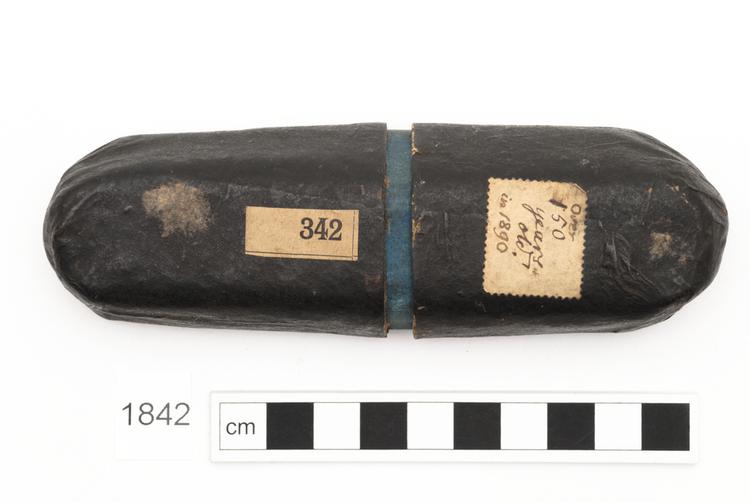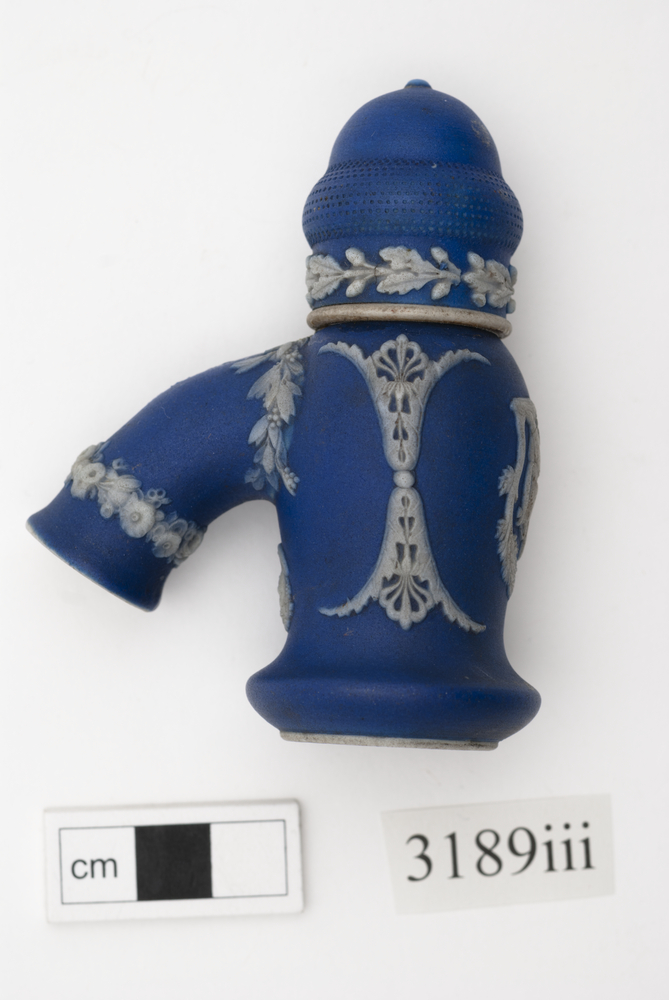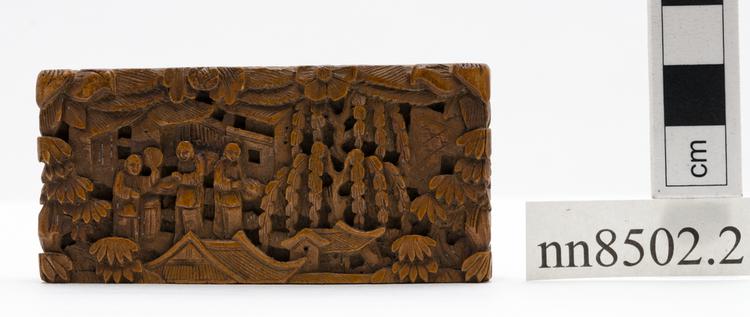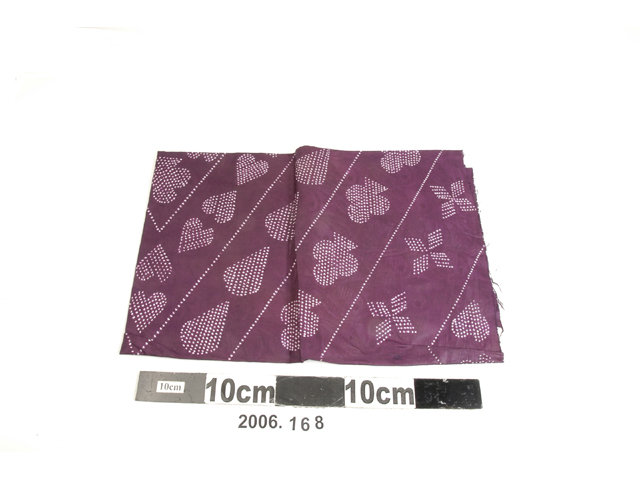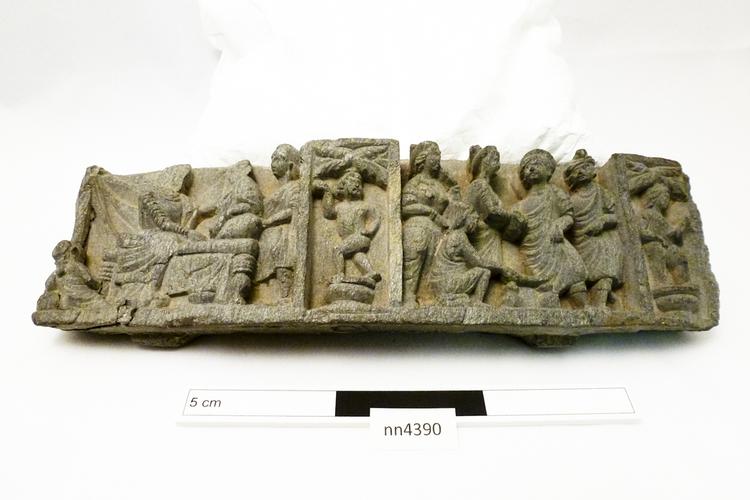
Sculpted panel in grey schist, a frieze in Gandharan style depicting two scenes, each separated by a male figure. Perhaps a stupa base. The right hand scene shows in the middle a Buddha-like individual, with a flat turban. On his left is a human figure. This latter individual has no halo and exhibits all the typical signs of a bodhisattva, a crested turban with a high usnisha, heavy ear ornaments, moustache and necklace. To the proper right of the Buddha stand a pair of women with flat head coverings and seated on the ground is a male with beard, perhaps a brahmin, tending the ceremonial fire with a fan, near a pair of pots for ritual water. The woman closest to the Buddha has taken his hand. This scene is likely to be the marriage of Prince Siddhartha and his wife.The left hand scene consists of two women seated on a high stool or bed covered with draperies. Behind them are hanging draperies, to their proper left stands what appears to be a serving woman and on the ground to their proper right sits another servant or dwarf, now much damaged. In narrative terms the two women, in both scenes, are likely to be the same individuals, with possibly the two on the left the Bodhisattva’s bride and her companion waiting for the wedding ceremony.
Sculpted panel in grey schist, a frieze in Gandharan style depicting two scenes, each separated by a male nude. Perhaps a stupa base. The right hand scene shows in the middle a Buddha-like individual, with a flat turban. On his left is a human figure. This latter individual has no halo and exhibits all the typical signs of a bodhisattva, a crested turban with a high usnisha, heavy ear ornaments, moustache and necklace. To the proper right of the Buddha stand a pair of women with flat head coverings and seated on the ground is a male with beard, perhaps a brahmin, tending the ceremonial fire with a fan, near a pair of pots for ritual water. The woman closest to the Buddha has taken his hand. This scene is likely to be the marriage of Prince Siddhartha and his wife.The left hand scene consists of two women seated on a high stool or bed covered with draperies. Behind them are hanging draperies, to their proper left stands what appears to be a serving woman and on the ground to their proper right sits another servant or dwarf, now much damaged. In narrative terms the two women, in both scenes, are likely to be the same individuals, with possibly the two on the left the Bodhisattva’s bride and her companion waiting for the wedding ceremony.



